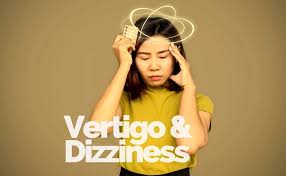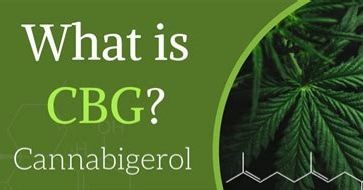Vertigo is a sensation of motion or spinning that is often described as dizziness:
Vertigo:
Definition: Vertigo is a specific type of dizziness characterized by a sensation of spinning or movement, either of the person or their surroundings.
Symptoms: Spinning sensation, balance problems, nausea, vomiting, nystagmus (involuntary eye movement), sweating, hearing loss, and ringing in the ears (tinnitus).
Causes:
Benign Paroxysmal Positional Vertigo (BPPV): Caused by small calcium particles (canaliths) clumping in the inner ear canals.
Meniere's Disease: Involves excessive fluid in the inner ear.
Vestibular Neuritis: Inflammation of the vestibular nerve, often due to viral infections.
Labyrinthitis: Inner ear infection affecting both hearing and balance.
Migraine: Vestibular migraines can cause vertigo without headache.
Other Causes: Head injuries, strokes, brain tumors, certain medications, and alcohol.
Dizziness:
Definition: Dizziness is a broader term encompassing various sensations such as feeling faint, woozy, weak, or unsteady.
Types of Dizziness:
Lightheadedness: A feeling of near-fainting or fainting, often associated with hypotension.
Disequilibrium: A sense of imbalance or unsteadiness without the spinning sensation.
Presyncope: Sensation of imminent fainting, often related to cardiovascular issues.
Non-specific Dizziness: General disorientation or a feeling of wooziness.
Causes:
Inner Ear Problems: Issues like BPPV, Meniere's disease, or vestibular neuritis.
Circulatory Problems: Blood pressure issues, heart conditions, or dehydration.
Neurological Conditions: Migraines, multiple sclerosis, Parkinson’s disease.
Medications: Blood pressure medications, sedatives, antidepressants, and certain antibiotics.
Anxiety Disorders: Panic attacks or generalized anxiety can cause dizziness.
Other Causes: Hypoglycemia, anemia, infections, overheating, and dehydration.
Prevention:
Manage Underlying Conditions: Treat cardiovascular issues, diabetes, and anxiety.
Avoid Triggers: Such as rapid head movements, certain visual stimuli, and known dietary triggers.
Regular Check-ups: Particularly for individuals with chronic conditions affecting balance.
Understanding vertigo and dizziness involves recognizing the wide array of potential causes and symptoms and seeking appropriate medical evaluation and treatment tailored to the underlying issue.
Taking these steps can help manage vertigo and dizziness more effectively, improve your quality of life, and reduce the risk of complications. Don't wait—take action today to regain control of your balance and well-being. Visit Here: https://tinyurl.com/5dywcvpc
#vertigo, #dizziness, #cardiovascular, #anxiety, #AnxietyDisorders
Vertigo:
Definition: Vertigo is a specific type of dizziness characterized by a sensation of spinning or movement, either of the person or their surroundings.
Symptoms: Spinning sensation, balance problems, nausea, vomiting, nystagmus (involuntary eye movement), sweating, hearing loss, and ringing in the ears (tinnitus).
Causes:
Benign Paroxysmal Positional Vertigo (BPPV): Caused by small calcium particles (canaliths) clumping in the inner ear canals.
Meniere's Disease: Involves excessive fluid in the inner ear.
Vestibular Neuritis: Inflammation of the vestibular nerve, often due to viral infections.
Labyrinthitis: Inner ear infection affecting both hearing and balance.
Migraine: Vestibular migraines can cause vertigo without headache.
Other Causes: Head injuries, strokes, brain tumors, certain medications, and alcohol.
Dizziness:
Definition: Dizziness is a broader term encompassing various sensations such as feeling faint, woozy, weak, or unsteady.
Types of Dizziness:
Lightheadedness: A feeling of near-fainting or fainting, often associated with hypotension.
Disequilibrium: A sense of imbalance or unsteadiness without the spinning sensation.
Presyncope: Sensation of imminent fainting, often related to cardiovascular issues.
Non-specific Dizziness: General disorientation or a feeling of wooziness.
Causes:
Inner Ear Problems: Issues like BPPV, Meniere's disease, or vestibular neuritis.
Circulatory Problems: Blood pressure issues, heart conditions, or dehydration.
Neurological Conditions: Migraines, multiple sclerosis, Parkinson’s disease.
Medications: Blood pressure medications, sedatives, antidepressants, and certain antibiotics.
Anxiety Disorders: Panic attacks or generalized anxiety can cause dizziness.
Other Causes: Hypoglycemia, anemia, infections, overheating, and dehydration.
Prevention:
Manage Underlying Conditions: Treat cardiovascular issues, diabetes, and anxiety.
Avoid Triggers: Such as rapid head movements, certain visual stimuli, and known dietary triggers.
Regular Check-ups: Particularly for individuals with chronic conditions affecting balance.
Understanding vertigo and dizziness involves recognizing the wide array of potential causes and symptoms and seeking appropriate medical evaluation and treatment tailored to the underlying issue.
Taking these steps can help manage vertigo and dizziness more effectively, improve your quality of life, and reduce the risk of complications. Don't wait—take action today to regain control of your balance and well-being. Visit Here: https://tinyurl.com/5dywcvpc
#vertigo, #dizziness, #cardiovascular, #anxiety, #AnxietyDisorders
Vertigo is a sensation of motion or spinning that is often described as dizziness:
Vertigo:
Definition: Vertigo is a specific type of dizziness characterized by a sensation of spinning or movement, either of the person or their surroundings.
Symptoms: Spinning sensation, balance problems, nausea, vomiting, nystagmus (involuntary eye movement), sweating, hearing loss, and ringing in the ears (tinnitus).
Causes:
Benign Paroxysmal Positional Vertigo (BPPV): Caused by small calcium particles (canaliths) clumping in the inner ear canals.
Meniere's Disease: Involves excessive fluid in the inner ear.
Vestibular Neuritis: Inflammation of the vestibular nerve, often due to viral infections.
Labyrinthitis: Inner ear infection affecting both hearing and balance.
Migraine: Vestibular migraines can cause vertigo without headache.
Other Causes: Head injuries, strokes, brain tumors, certain medications, and alcohol.
Dizziness:
Definition: Dizziness is a broader term encompassing various sensations such as feeling faint, woozy, weak, or unsteady.
Types of Dizziness:
Lightheadedness: A feeling of near-fainting or fainting, often associated with hypotension.
Disequilibrium: A sense of imbalance or unsteadiness without the spinning sensation.
Presyncope: Sensation of imminent fainting, often related to cardiovascular issues.
Non-specific Dizziness: General disorientation or a feeling of wooziness.
Causes:
Inner Ear Problems: Issues like BPPV, Meniere's disease, or vestibular neuritis.
Circulatory Problems: Blood pressure issues, heart conditions, or dehydration.
Neurological Conditions: Migraines, multiple sclerosis, Parkinson’s disease.
Medications: Blood pressure medications, sedatives, antidepressants, and certain antibiotics.
Anxiety Disorders: Panic attacks or generalized anxiety can cause dizziness.
Other Causes: Hypoglycemia, anemia, infections, overheating, and dehydration.
Prevention:
Manage Underlying Conditions: Treat cardiovascular issues, diabetes, and anxiety.
Avoid Triggers: Such as rapid head movements, certain visual stimuli, and known dietary triggers.
Regular Check-ups: Particularly for individuals with chronic conditions affecting balance.
Understanding vertigo and dizziness involves recognizing the wide array of potential causes and symptoms and seeking appropriate medical evaluation and treatment tailored to the underlying issue.
Taking these steps can help manage vertigo and dizziness more effectively, improve your quality of life, and reduce the risk of complications. Don't wait—take action today to regain control of your balance and well-being. Visit Here: https://tinyurl.com/5dywcvpc
#vertigo, #dizziness, #cardiovascular, #anxiety, #AnxietyDisorders
0 Comments
0 Shares
4197 Views








